Abstract
In Experiment 1, Japanese monkeys were trained on three conditional position-discrimination problems with colors as the conditional cues. Within each session, each problem was presented for two blocks of ten reinforcements; correct responses were reinforced under continuous-reinforcement, fixed-ratio 5, and variable-ratio 5 schedules, each assigned to one of the three problems. The assignment of schedules to problems was rotated a total of three times (15 sessions per assignment) after 30 sessions of acquisition training. Accuracy of discrimination increased to a moderate level with fewer trials under CRF than under ratio schedules. In contrast, the two ratio schedules, fixed and variable, were more effective in maintaining accurate discrimination than was CRF. With further training, as asymptotes were reached, accuracy was less affected by the schedule differences. These results demonstrated an interaction between the effects of reinforcement schedules and the level of acquisition. In Experiment 2, ratio sizes were gradually increased to 30. Discrimination accuracy was maintained until the ratio reached 20; ratio 30 strained the performance. Under FR conditions, accuracy increased as correct choice responses cumulated after reinforcement.
Keywords: reinforcement schedules, fixed-ratio schedule, variable-ratio schedule, conditional discrimination, key press, monkeys
Full text
PDF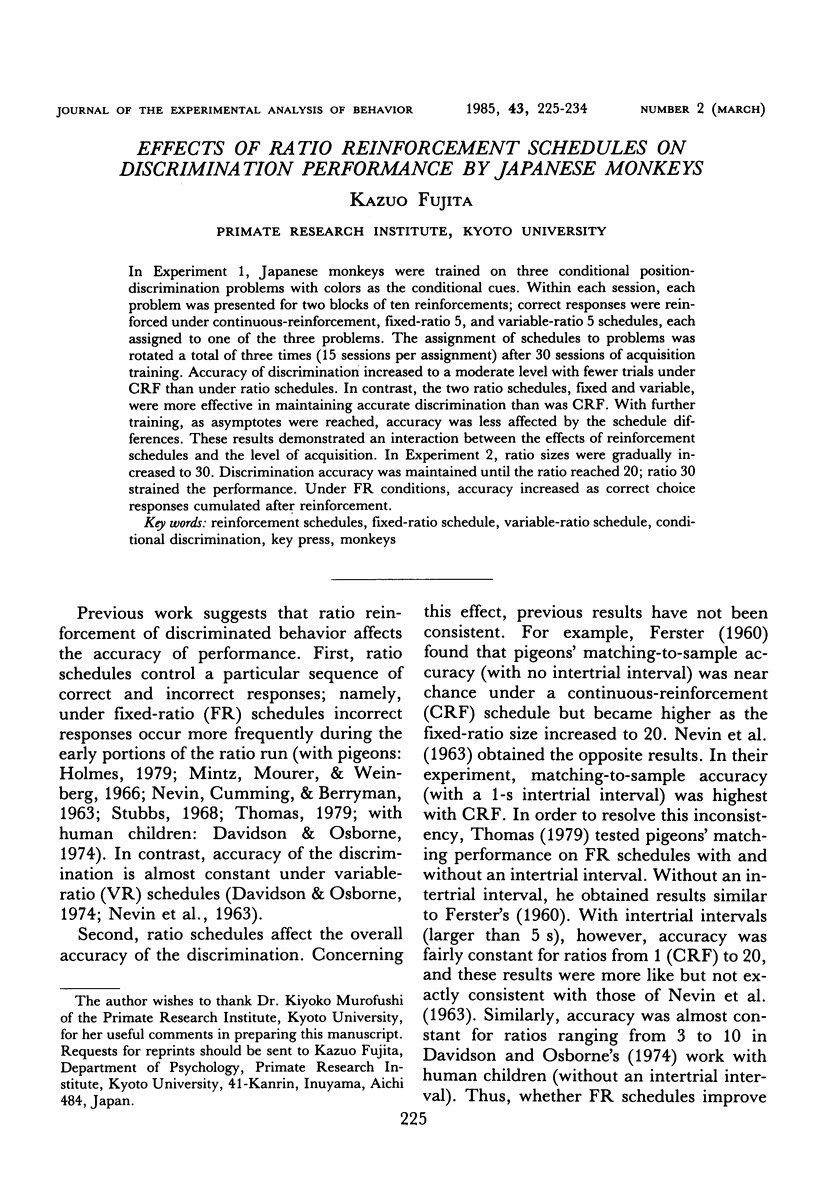
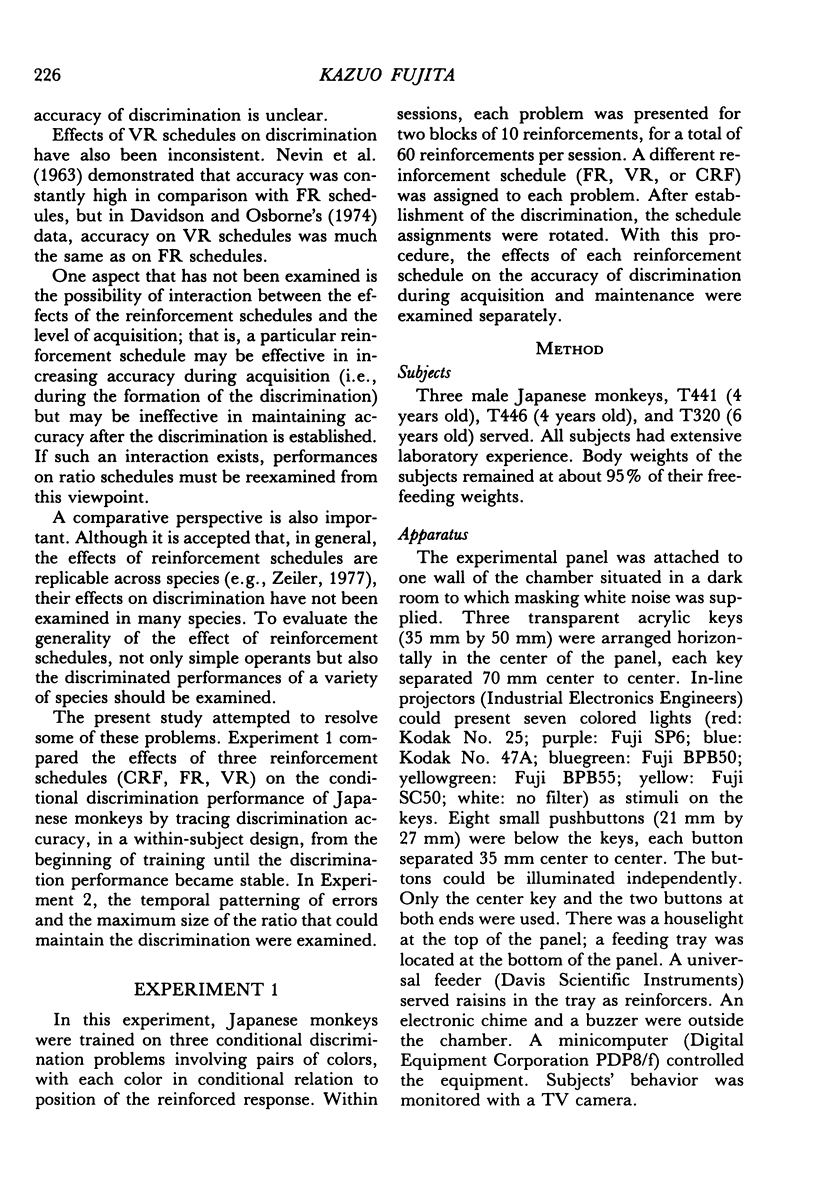

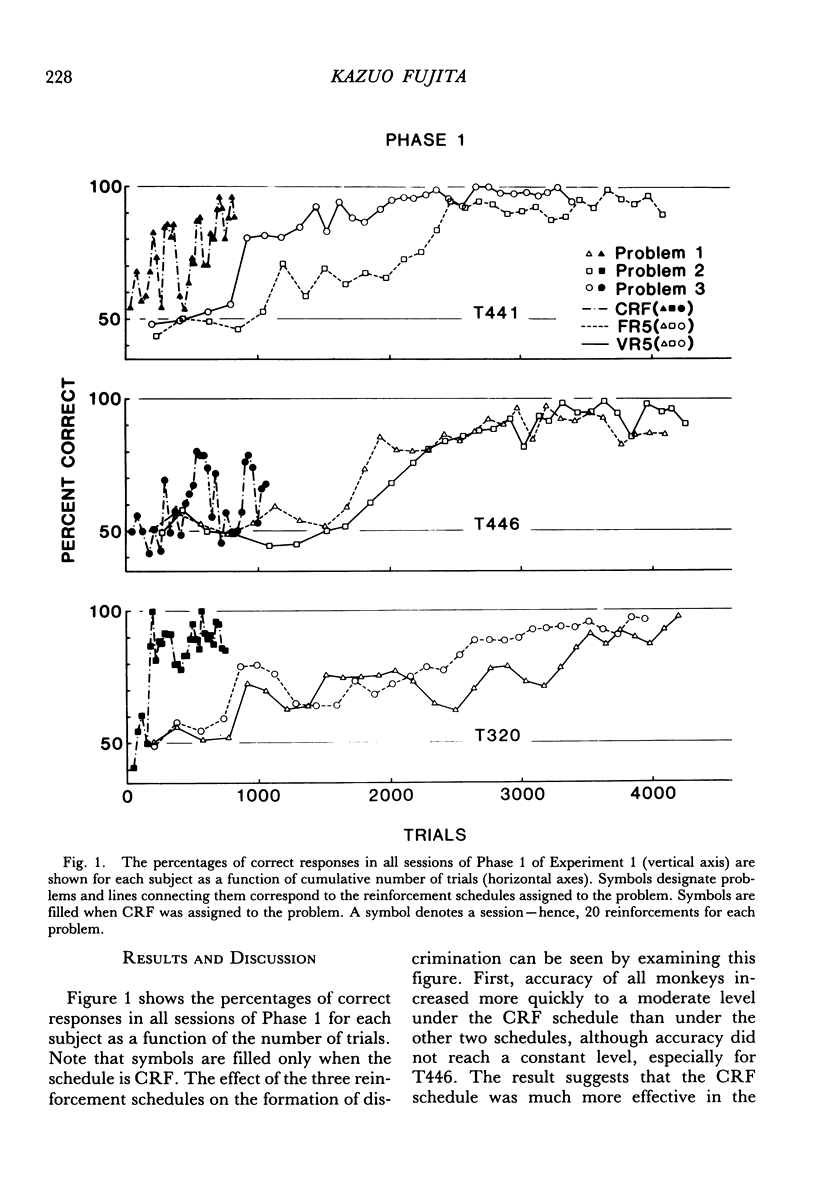


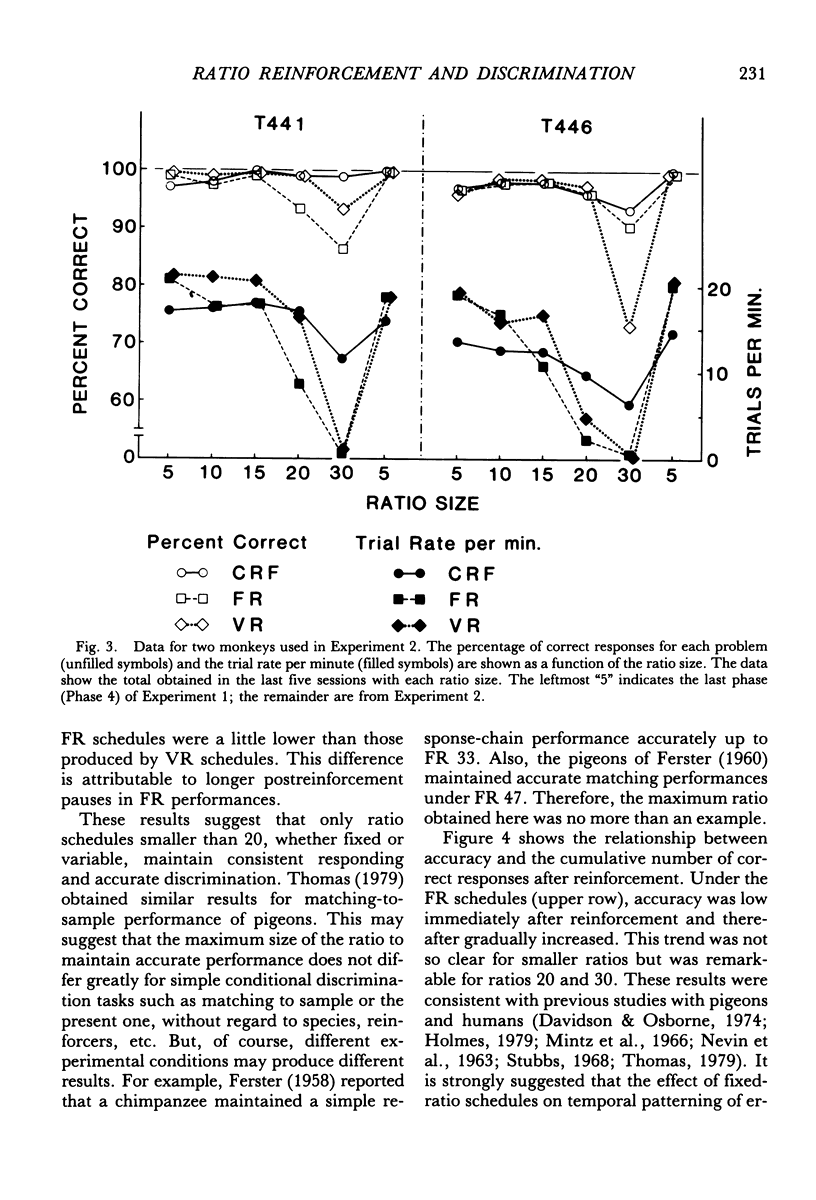
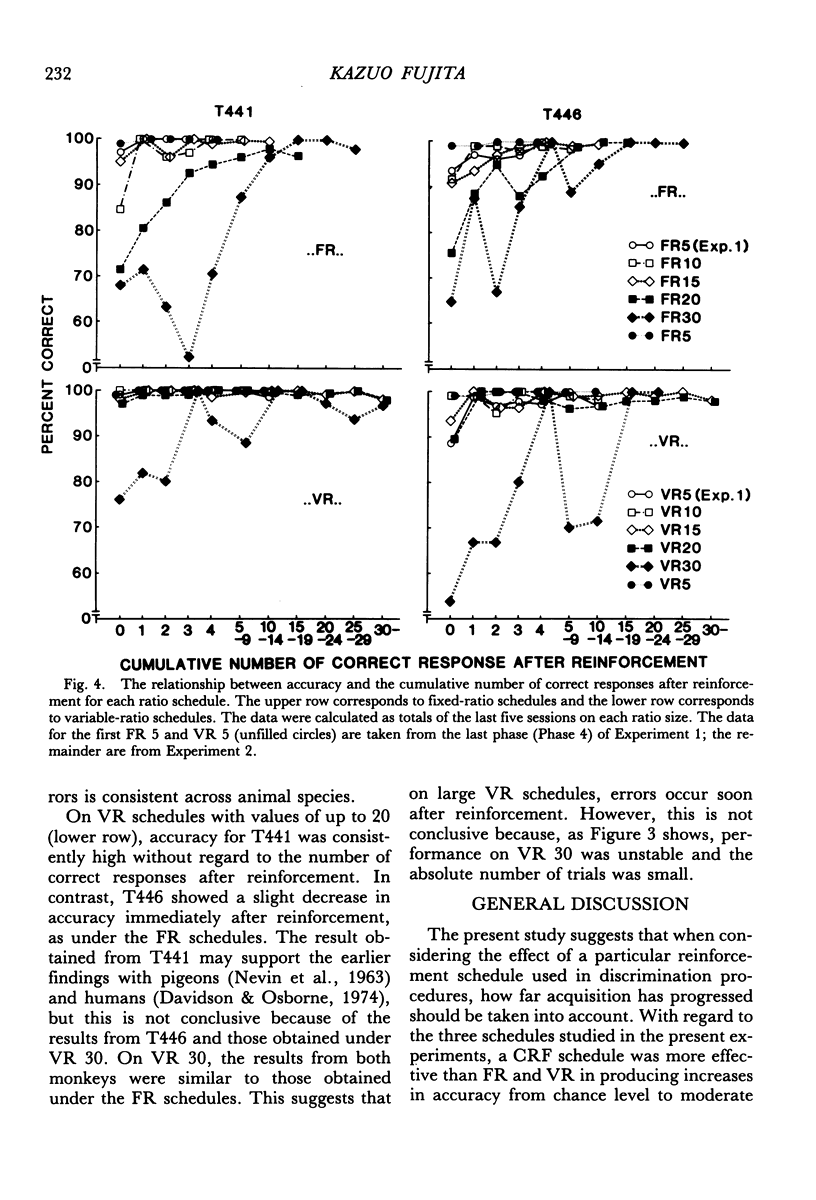
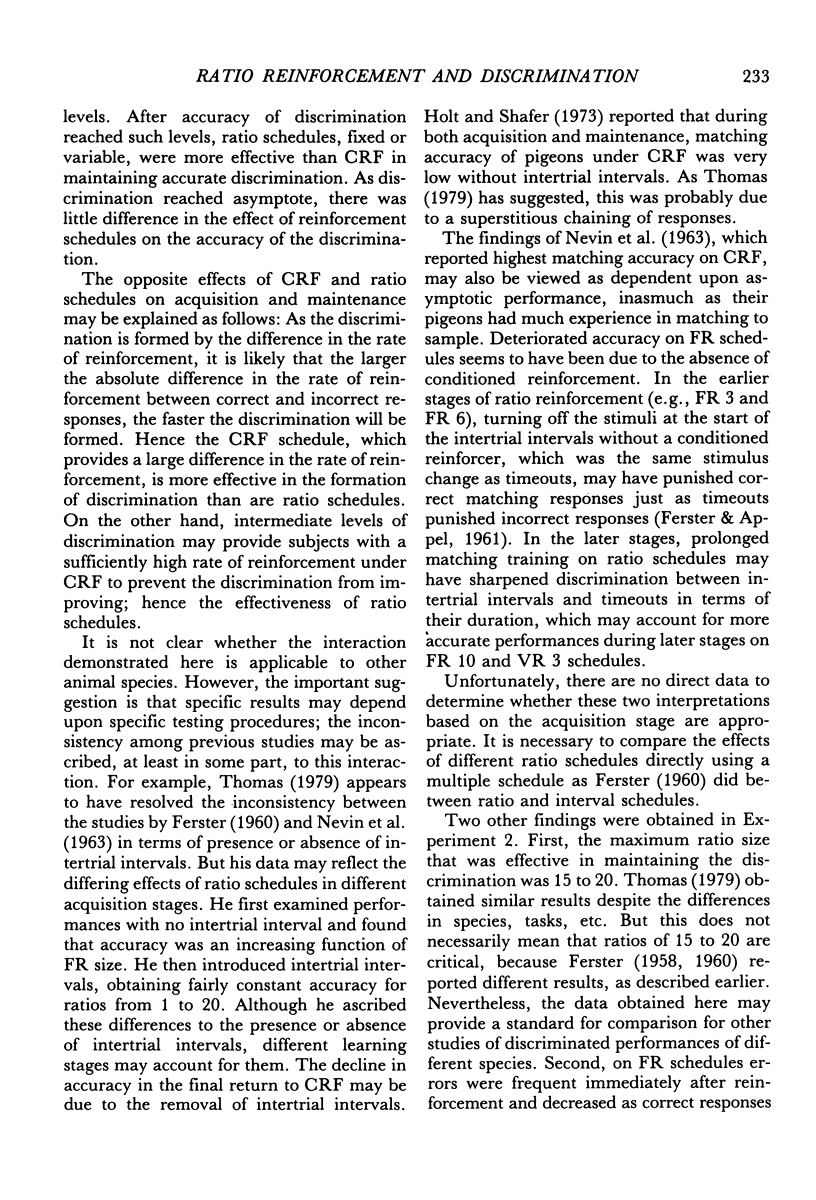

Selected References
These references are in PubMed. This may not be the complete list of references from this article.
- Davidson N. A., Osborne J. G. Fixed-ratio and fixed-interval schedule control of matching-to-sample errors by children. J Exp Anal Behav. 1974 Jan;21(1):27–36. doi: 10.1901/jeab.1974.21-27. [DOI] [PMC free article] [PubMed] [Google Scholar]
- FERSTER C. B., APPEL J. B. Punishment of S delta responding in matching to sample by time out from positive reinforcement. J Exp Anal Behav. 1961 Jan;4:45–56. doi: 10.1901/jeab.1961.4-45. [DOI] [PMC free article] [PubMed] [Google Scholar]
- FERSTER C. B. Intermittent reinforcement of matching to sample in the pigeon. J Exp Anal Behav. 1960 Jul;3:259–272. doi: 10.1901/jeab.1960.3-259. [DOI] [PMC free article] [PubMed] [Google Scholar]
- Ferster C. B. Intermittent Reinforcement of a Complex Response in a Chimpanzee. J Exp Anal Behav. 1958 Apr;1(2):163–165. doi: 10.1901/jeab.1958.1-163. [DOI] [PMC free article] [PubMed] [Google Scholar]
- Holmes P. W. Transfer of matching performance in pigeons. J Exp Anal Behav. 1979 Jan;31(1):103–114. doi: 10.1901/jeab.1979.31-103. [DOI] [PMC free article] [PubMed] [Google Scholar]
- Holt G. L., Shafer J. N. Function of intertrial interval in matching-to-sample. J Exp Anal Behav. 1973 Jan;19(1):181–186. doi: 10.1901/jeab.1973.19-181. [DOI] [PMC free article] [PubMed] [Google Scholar]
- Mintz D. E., Mourer D. J., Weinberg L. S. Stimulus control in fixed ratio matching-to-sample. J Exp Anal Behav. 1966 Nov;9(6):627–630. doi: 10.1901/jeab.1966.9-627. [DOI] [PMC free article] [PubMed] [Google Scholar]
- NEVIN J. A., CUMMING W. W., BERRYMAN T. Ratio reinforcement of matching behavior. J Exp Anal Behav. 1963 Apr;6:149–154. doi: 10.1901/jeab.1963.6-149. [DOI] [PMC free article] [PubMed] [Google Scholar]
- Nevin J. A. Effects of reinforcement scheduling on simultaneous discrimination performance. J Exp Anal Behav. 1967 May;10(3):251–260. doi: 10.1901/jeab.1967.10-251. [DOI] [PMC free article] [PubMed] [Google Scholar]
- Stubbs A. The discrimination of stimulus duration by pigeons. J Exp Anal Behav. 1968 May;11(3):223–238. doi: 10.1901/jeab.1968.11-223. [DOI] [PMC free article] [PubMed] [Google Scholar]
- Thomas J. R. Matching-to-sample accuracy on fixed-ratio schedules. J Exp Anal Behav. 1979 Sep;32(2):183–189. doi: 10.1901/jeab.1979.32-183. [DOI] [PMC free article] [PubMed] [Google Scholar]


